Márcio Ferreira
Machine-Learning Love: classifying the equation of state of neutron stars with Transformers
Oct 15, 2022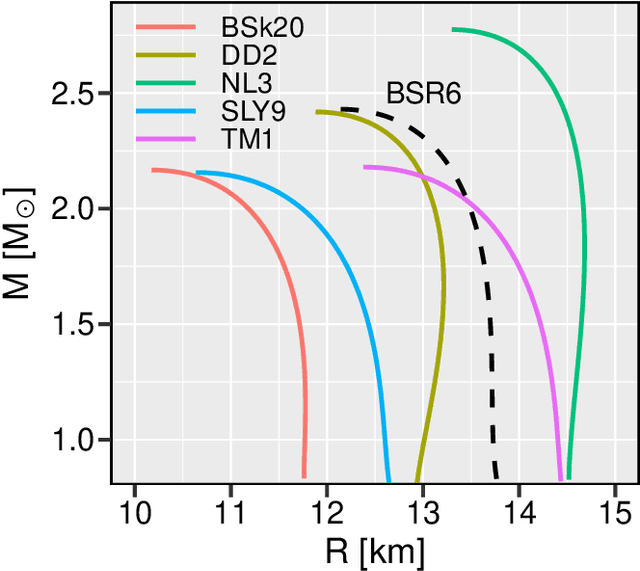
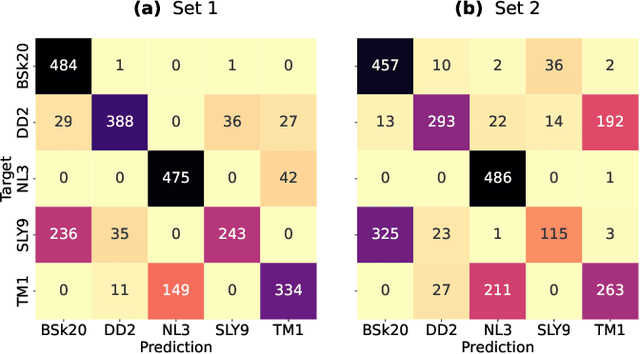
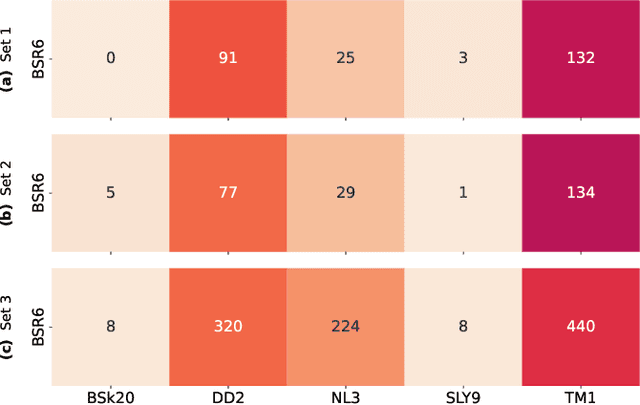
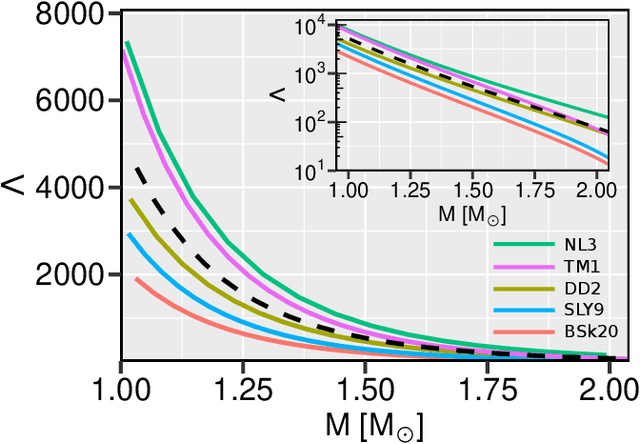
Abstract:The use of the Audio Spectrogram Transformer (AST) model for gravitational-wave data analysis is investigated. The AST machine-learning model is a convolution-free classifier that captures long-range global dependencies through a purely attention-based mechanism. In this paper a model is applied to a simulated dataset of inspiral gravitational wave signals from binary neutron star coalescences, built from five distinct, cold equations of state (EOS) of nuclear matter. From the analysis of the mass dependence of the tidal deformability parameter for each EOS class it is shown that the AST model achieves a promising performance in correctly classifying the EOS purely from the gravitational wave signals, especially when the component masses of the binary system are in the range $[1,1.5]M_{\odot}$. Furthermore, the generalization ability of the model is investigated by using gravitational-wave signals from a new EOS not used during the training of the model, achieving fairly satisfactory results. Overall, the results, obtained using the simplified setup of noise-free waveforms, show that the AST model, once trained, might allow for the instantaneous inference of the cold nuclear matter EOS directly from the inspiral gravitational-wave signals produced in binary neutron star coalescences.
Identification of Binary Neutron Star Mergers in Gravitational-Wave Data Using YOLO One-Shot Object Detection
Jul 01, 2022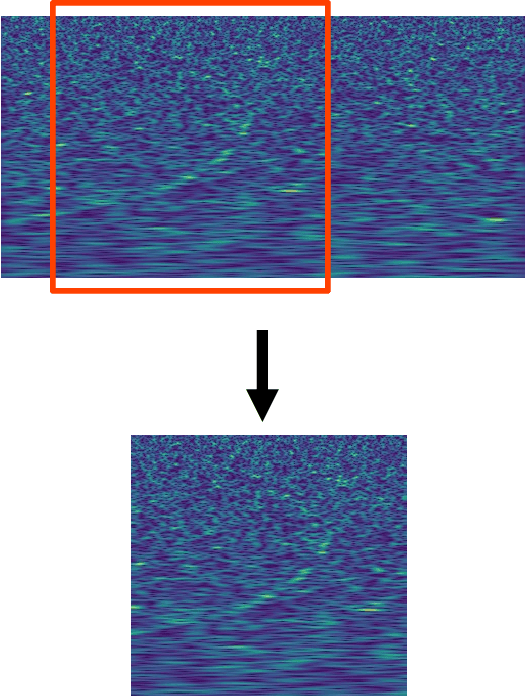
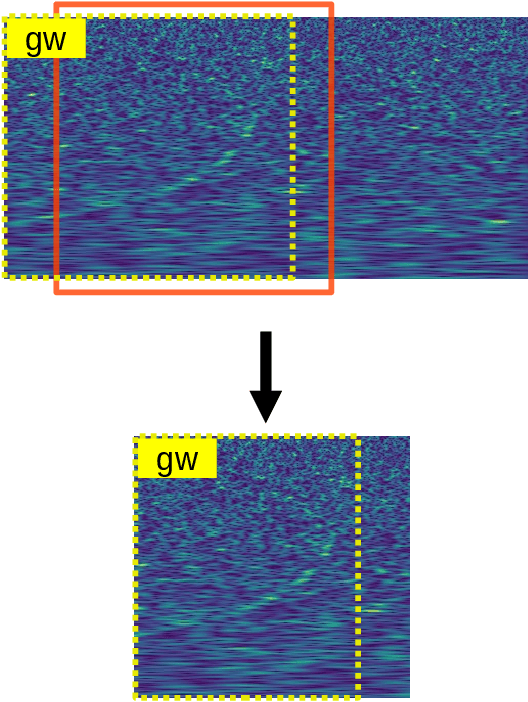
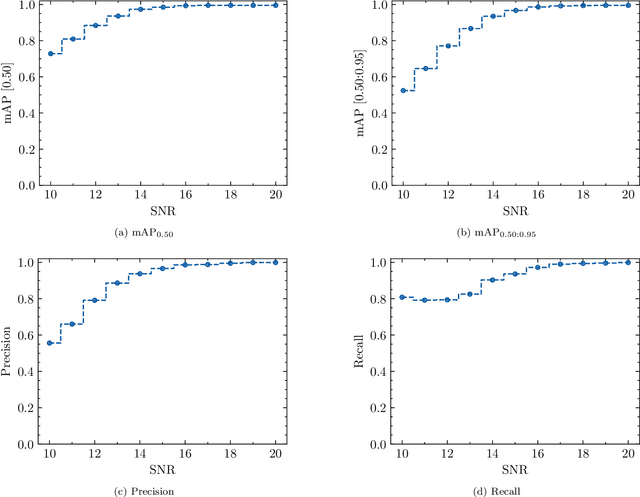
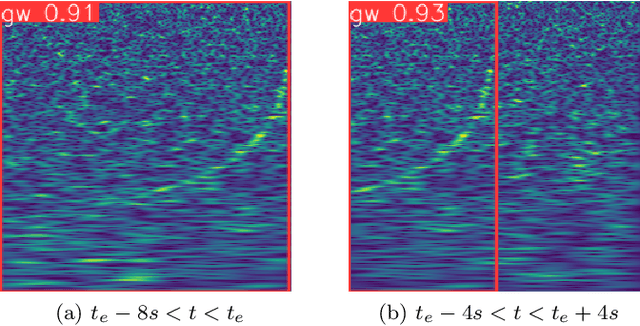
Abstract:We demonstrate the application of the YOLOv5 model, a general purpose convolution-based single-shot object detection model, in the task of detecting binary neutron star (BNS) coalescence events from gravitational-wave data of current generation interferometer detectors. We also present a thorough explanation of the synthetic data generation and preparation tasks based on approximant waveform models used for the model training, validation and testing steps. Using this approach, we achieve mean average precision ($\text{mAP}_{[0.50]}$) values of 0.945 for a single class validation dataset and as high as 0.978 for test datasets. Moreover, the trained model is successful in identifying the GW170817 event in the LIGO H1 detector data. The identification of this event is also possible for the LIGO L1 detector data with an additional pre-processing step, without the need of removing the large glitch in the final stages of the inspiral. The detection of the GW190425 event is less successful, which attests to performance degradation with the signal-to-noise ratio. Our study indicates that the YOLOv5 model is an interesting approach for first-stage detection alarm pipelines and, when integrated in more complex pipelines, for real-time inference of physical source parameters.
 Add to Chrome
Add to Chrome Add to Firefox
Add to Firefox Add to Edge
Add to Edge